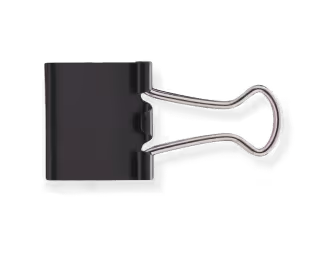The Only Website Design Checklist for B2B SaaS You Need
It’s easy to throw together a website. What’s hard is building one that convinces people to book a demo. That’s where many B2B SaaS sites fall short. You might have a solid product, but if the design lacks clarity, confidence, and structure, conversions are bound to flatline.
Today, we will cut through the fluff and get down to what to prioritize, what to avoid, and how to build a business website with intent.
Here’s the website design checklist we have used for successfully completing over 100+ client projects:
1. Strategy, Research & Planning
A. Business Foundation
- Define primary conversion goals (demo requests, free trials, contact sales, freemium signups)
- Set SaaS-specific KPIs (MQLs, CAC, trial-to-paid conversion, LTV, churn rate)
- Create detailed ICPs with pain points, budget ranges, and decision timelines
- Map buyer personas (end users, decision makers, technical evaluators, procurement)
B. Competitive Intelligence
- Analyze 5-10 direct competitors' websites (messaging, pricing, features, social proof)
- Screenshot competitor pricing pages and feature comparison tables
- Document competitor positioning statements and value propositions
- Identify gaps in competitor messaging that you can exploit
C. User Journey Mapping
- Map awareness stage content needs (problem-focused blog posts, calculators)
- Plan consideration stage assets (comparison guides, feature pages, case studies)
- Design decision stage conversion paths (demos, trials, consultations)
- Create retention/expansion touchpoints (customer success stories, upgrade prompts)
D. Site Architecture
- Plan a scalable navigation structure for growth
- Design information architecture for multiple product lines
- Outline integration pages for popular tools in your space
- Map content clusters for SEO (pillar pages + supporting content)
E. Technical Requirements
- Choose a CMS that supports marketing automation (Reasons we recommend Webflow CMS)
- Plan CRM integration architecture (lead scoring, attribution tracking)
- List required third-party integrations (chat, scheduling, analytics, email)
- Define lead qualification workflows and handoff processes
2. Messaging & Positioning Strategy
A. Core Messaging
- Write a value proposition that answers "what, who, why now" in under 10 words
- Create a pain point hierarchy (biggest pain first, supporting pains after)
- Develop differentiation messaging (what makes you unique vs alternatives)
- Test messaging with 10+ prospects before finalizing
B. Persona-Specific Content
- Write separate hero messages for each buyer persona
- Create role-specific feature callouts (technical vs business benefits)
- Develop persona-based use case pages
- Plan persona-specific demo flows and landing pages
C. Social Proof Strategy
- Collect 15+ customer testimonials with specific results/metrics
- Gather customer logos (aim for recognizable brands in each target industry)
- Document case studies with before/after metrics
- Collect video testimonials from different persona types
- Screenshot positive reviews from G2, Capterra, TrustRadius
3. Conversion Psychology & Trust Building
A. Trust Signals
- Display security certifications prominently (SOC 2, ISO 27001, GDPR)
- Add customer count or usage statistics ("Trusted by 10,000+ companies")
- Include uptime guarantees and SLA information
- Show integration logos of popular tools you connect with
- Add "as featured in" media logos if applicable
B. Pricing Psychology
- Design a pricing table with clear value anchoring (the most expensive option first)
- Add "most popular" badges to guide selection
- Include an annual vs monthly toggle with a savings callout
- Show per-user pricing breakdown for transparency
- Add an enterprise "contact sales" option for maximum price anchoring
C. Demo & Trial Optimization
- Create a low-friction demo booking (minimal form fields)
- Design instant demo options (self-service product tours)
- Plan trial signup flow with progressive profiling
- Add trial extension options for engaged users
- Create demo confirmation sequences with value-building content
D. Objection Handling
- Create an FAQ section addressing common concerns
- Add "no credit card required" messaging for trials
- Include money-back guarantees where applicable
- Address security concerns with a dedicated security page
- Create comparison pages for main competitors ("vs Competitor")
4. Design & UX
A. Visual Hierarchy
- Design hero section with clear value prop + CTA within 3 seconds
- Create scannable layouts with strategic white space
- Use consistent color psychology (trust colors for CTAs)
- Design mobile-first, but optimize for desktop decision-making
B. CTA Strategy
- Place primary CTA above the fold on every key page
- Use action-oriented CTA copy ("Start Free Trial" vs "Learn More")
- Create CTA variation for different funnel stages
- Add sticky CTAs for long-form pages
- Test CTA colors against brand colors for conversion
C. Product Showcase
- Include actual product screenshots (not generic illustrations)
- Create interactive product demos or video walkthroughs
- Show integrations visually with logos and connection flows
- Add before/after scenarios showing problem → solution
- Design feature comparison tables with checkmarks vs competitors
D. Social Proof Display
- Create a customer logo wall on the homepage
- Add testimonial sliders with photos and company info
- Display star ratings and review counts prominently
- Show real-time usage stats or activity feeds
- Include case study previews with metrics
5. Content Creation & Optimization
A. Homepage Content
- Write a headline that passes the "5-second test"
- Create a subheadline explaining who it's for and the key benefit
- List 3-4 main features with benefit-focused descriptions
- Add a social proof section with logos and testimonials
- Include clear next steps with multiple CTA options
B. Product/Features Pages
- Write benefit-focused feature descriptions (not just feature lists)
- Add use case examples for each major feature
- Include feature-specific testimonials
- Create comparison tables showing your advantage
- Add related integration callouts
C. Use Case/Solutions Pages
- Write industry-specific problem statements
- Show role-specific workflows and solutions
- Include relevant customer stories and metrics
- Add industry-specific social proof
- Create tailored CTA messaging for each use case
D. Trust & Legal Content
- Write a comprehensive security page with certifications
- Create a transparent privacy policy in plain language
- Add terms of service that build confidence
- Include a detailed about page with team photos
- Create a contact page with multiple ways to reach you
6. Lead Generation & Conversion
A. Lead Magnets
- Create high-value gated content (ROI calculators, templates, guides)
- Design an email course series for nurturing
- Add exit-intent popups with relevant offers
- Create scroll-triggered lead magnets at 70% page scroll
- Design content upgrades for popular blog posts
B. Form Optimization
- Minimize form fields to essential information only
- Use progressive profiling to gather data over time
- Add form field explanations where needed
- Test single-column vs multi-column layouts
- Include privacy statements near form submit buttons
C. Email Capture Strategy
- Create a newsletter signup with a clear value proposition
- Add content-specific email sequences for different topics
- Design a welcome email series for new subscribers
- Create re-engagement campaigns for inactive leads
- Set up behavioral email triggers based on site activity
7. Technical Development & Performance
A. Core Development
- Build a responsive design system with reusable components
- Implement fast-loading design (target <3-second load times)
- Create a clean URL structure for SEO
- Add proper HTML semantic structure
- Build accessible forms with proper labeling
B. Third-Party Integrations
- Connect CRM for lead tracking and scoring
- Integrate live chat or chatbots for real-time support
- Add scheduling tools for demo bookings
- Connect an email marketing platform for nurturing
- Integrate analytics for conversion tracking
C. Performance Optimization
- Compress all images without quality loss
- Implement lazy loading for below-the-fold content
- Minify CSS and JavaScript files
- Set up CDN for faster global loading
- Enable browser caching for return visitors
8. SEO & Content Marketing
A. Technical SEO
- Optimize page titles and meta descriptions for target keywords
- Add proper header tag hierarchy (H1, H2, H3)
- Create an XML sitemap and submit to search engines
- Set up Google Search Console and Analytics
- Implement schema markup for software applications
B. Content SEO
- Research buyer-intent keywords for each persona
- Create pillar pages for main topic clusters
- Write supporting blog content for each pillar
- Add internal linking between related pages
- Optimize images with descriptive alt text
C. Local & Industry SEO
- Create location pages if serving specific regions
- Build industry-specific landing pages
- Get listed in relevant SaaS directories
- Create comparison content for competitor keywords
- Build backlinks through guest posting and partnerships
9. Testing & Quality Assurance
A. Functionality Testing
- Test all forms and CTA buttons across devices
- Verify CRM integration and lead flow
- Test the demo booking and confirmation process
- Check email deliverability for automated sequences
- Verify analytics tracking for all conversion event
B. User Experience Testing
- Test mobile experience on multiple devices
- Verify page load speeds across different connections
- Check accessibility with screen readers
- Test cross-browser compatibility
C. Conversion Testing
- A/B test headline variations on the homepage
- Test different CTA button colors and copy
- Experiment with form field quantities
- Test pricing page layouts and information hierarchy
- Try different social proof placements and formats
10. Launch & Optimization
A. Pre-Launch
- Set up all analytics and conversion tracking
- Create 301 redirects for any changed URLs
- Test all forms with real email addresses
- Verify SSL certificate and security settings
- Create launch announcement content
B. Post-Launch Monitoring
- Monitor site performance and uptime daily
- Track conversion rates for each traffic source
- Watch user behavior with heatmaps and recordings
- Monitor search rankings for target keywords
- Collect user feedback through surveys and interviews
C. Ongoing Optimization
- Run monthly A/B tests on key conversion pages
- Update social proof and testimonials quarterly
- Refresh content based on new features and updates
- Analyze competitor changes and adapt the strategy
- Scale successful elements to other pages and campaigns
D. Growth Initiatives
- Create new landing pages for ad campaigns
- Develop account-based marketing (ABM) page templates
- Build referral program integration
- Create a customer advocacy program
- Plan expansion into new market segments
Studies show that 94% of first impressions are shaped by a site’s design, and nearly 75% of people judge a company’s credibility just by looking at its website. So, as a website designer, you're directly responsible for how the business is perceived.
At Beetle Beetle, we obsess over every detail when designing B2B SaaS sites for our client projects. And while the checklist gives you the full picture, we’ve also included a quick summary of each step for anyone who wants to dig deeper.
Want the full checklist as a PDF? Download here.
1. Strategy, Research & Planning
This foundation phase determines whether your website converts or collects dust. You need to understand precisely who makes buying decisions, what keeps them awake at night, and how they currently solve problems.
Our team spends weeks mapping out buyer personas and user journeys before writing a single line of code.
We analyze competitors not just for inspiration, but to find gaps they can exploit. All these extra steps with just one goal in mind - creating a conversion machine that turns strangers into customers.
Also read: How to Conduct Market and Customer Research
2. Messaging & Positioning Strategy
Your messaging either hooks prospects in the first five seconds or sends them running to competitors. Generic value propositions like "we help businesses grow" are conversion killers. B2B buyers need to understand what you do, who you serve, and why they should care right now.
An effective message hierarchy looks something like this:
- Lead with the biggest pain point you solve
- Follow with clear differentiation from alternatives
- Support with specific outcomes and metrics
- End with compelling reasons to act now
3. Conversion Psychology & Trust Building
B2B buyers are naturally skeptical. They've been burned by software that overpromised and underdelivered. Your job is building enough trust to get them to take the next step, whether that's booking a demo or starting a trial.
Trust signals work differently for SaaS companies than e-commerce brands. Security certifications matter more than generic testimonials. Specific customer results outperform vague success stories. Pricing transparency beats "contact us for pricing" every time.
4. Design & User Experience
Your website design should guide visitors toward conversion without feeling pushy. It creates clear visual hierarchy that helps busy decision-makers find information quickly. Every design choice should reduce friction and build confidence in your solution.
Mobile-first design matters, but don't forget that B2B buyers often research on desktop during work hours. Your pricing page needs to load fast and display perfectly on a 24-inch monitor. Complex comparison tables should be readable without squinting.
Design principles that convert:
- Place primary CTA above the fold on every page
- Use actual product screenshots, not generic illustrations
- Create scannable layouts with strategic white space
- Design interactive demos that showcase real functionality
5. Content Creation & Optimization
Content is where a lot of websites fall behind. They focus on features instead of benefits. They use industry jargon that confuses prospects. They write about themselves instead of addressing customer problems.
Winning content speaks directly to specific buyer personas at different stages of their journey. Start with the homepage. The homepage copy should immediately grab attention and build interest.
Ensure the feature pages connect capabilities to business outcomes. The goal is making prospects think "This company gets my exact situation."
Content creation essentials:
- Headlines that pass the 5-second comprehension test
- Benefit-focused feature descriptions with real examples
- Industry-specific use cases with relevant social proof
- Clear next steps on every page without overwhelming choices
6. Lead Generation & Conversion
Lead generation gets tricky with B2B SaaS because buyers rarely convert immediately. They need time to research, compare options, and build internal consensus. Your job is to stay on their radar without being annoying.
The smartest approach captures visitors at different commitment levels. Someone ready to book a demo gets a prominent CTA. Browsers who aren't ready yet might download a helpful calculator or guide.
Exit-intent popups catch people leaving and offer something valuable as a last resort. Over time, you gather more information through progressive forms that don't overwhelm anyone.
Lead capture strategies:
- Create high-value gated content like ROI calculators
- Use exit-intent popups with relevant offers
- Minimize form fields to reduce abandonment
- Set up behavioral triggers based on site activity
7. Technical Development & Performance
Slow websites, cluttered layouts, and complex navigation are some of the biggest turn-offs for website visitors.
Your prospects expect your website to work as smoothly as the software you're selling. If your demo booking form breaks on mobile, they'll assume your actual product has similar problems.
Technical must-haves:
- Load times under 3 seconds (especially for pricing and signup pages)
- Forms that work perfectly and connect to your CRM automatically
- Mobile experience that doesn't require zooming or pinching
- Live chat integration that feels helpful, not intrusive
8. SEO & Content Marketing
SEO for SaaS is a lot more nuanced than it is for other industries. You want people actively looking for solutions to problems you solve. Someone searching "best CRM software" is worth 100 visitors who stumbled across your site accidentally.
Think about what your ideal customers actually type into Google. They're not searching for your company name because they don't know you exist yet. Instead, they're looking up specific problems, comparing alternatives, or trying to understand complex topics.
Create content that answers these real questions, and you'll attract prospects who are much closer to making a purchase decision.
9. Testing & Quality Assurance
Testing reveals the uncomfortable truth about what actually works versus what you think works. Most assumptions about user behavior are completely wrong. That CTA button you're convinced is perfect? It might be costing you 30% of your conversions.
Testing the following:
- Watch real prospects navigate your site and complete tasks
- Test every form, button, and conversion path across different devices
- A/B test one element at a time to understand what actually moves the needle
- Check how your site performs on slower internet connections
10. Launch & Optimization
Launch day feels like the finish line, but it's actually when the real work begins. Now you have actual data instead of guesses. You can see exactly where people drop off, which pages convert best, and what messaging resonates with real prospects.
Stay curious about what your users actually do versus what you think they should do. Small improvements compound over time into dramatic conversion rate increases.
Post-launch optimization:
- Track where visitors drop off and fix those specific friction points
- Update customer testimonials and logos every quarter
- Test new headlines and CTAs monthly based on actual user behavior
- Adapt your messaging as you learn more about what motivates prospects
To anyone who is new to web design, keeping track of so many steps might seem intimidating. But don’t worry, you will get there.
If you want to skip the learning curve or simply lack the manpower to plan and execute a high-converting SaaS website, get an expert on board.
Sometimes the fastest path to results is letting experts handle what they do best while you focus on building great software.
How Beetle Beetle Can Help
Your SaaS website's success depends on getting hundreds of details right, from buyer psychology to technical implementation.
Each missed element compounds into lower conversion rates and lost revenue. Most teams underestimate how different SaaS websites need to be from standard business sites.
At Beetle Beetle, we focus specifically on B2B SaaS website design. We've worked with over 100+ SaaS businesses and understand the nuances of longer sales cycles and the specific elements that build trust with software buyers. Our approach combines conversion psychology with technical execution.
What we bring to the table:
- Research-driven buyer persona mapping and user journey optimization
- Pricing page design that reduces decision friction and objection handling
- Technical trust signals and compliance messaging for enterprise sales
- Product showcase strategies that demonstrate value without overwhelming prospects
If you're planning a website redesign or struggling with conversion rates, we'd be happy to discuss your specific situation.
P.S. We only work with two clients every month. Schedule a demo call today to get one step ahead of your competitors.


.jpg)





























